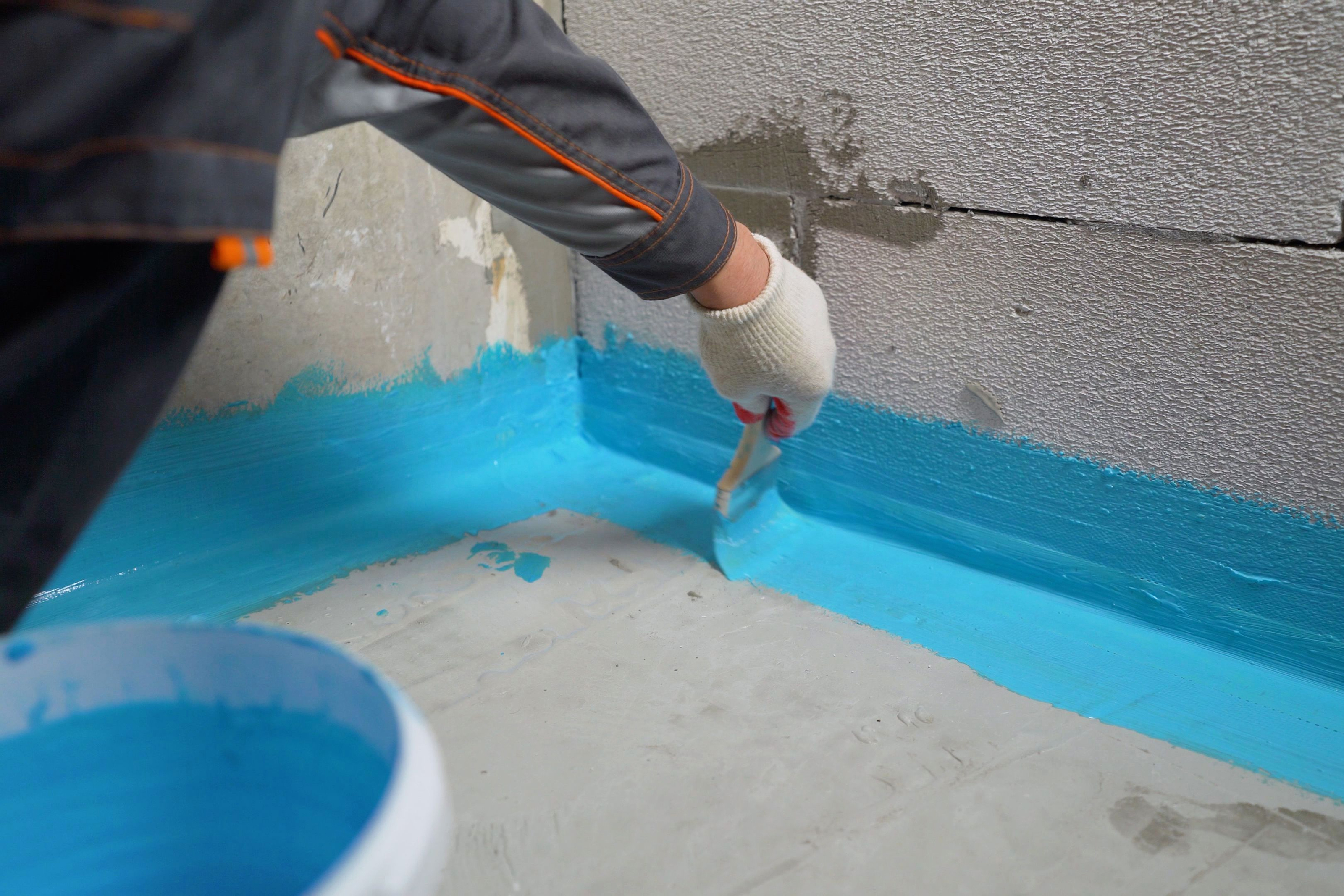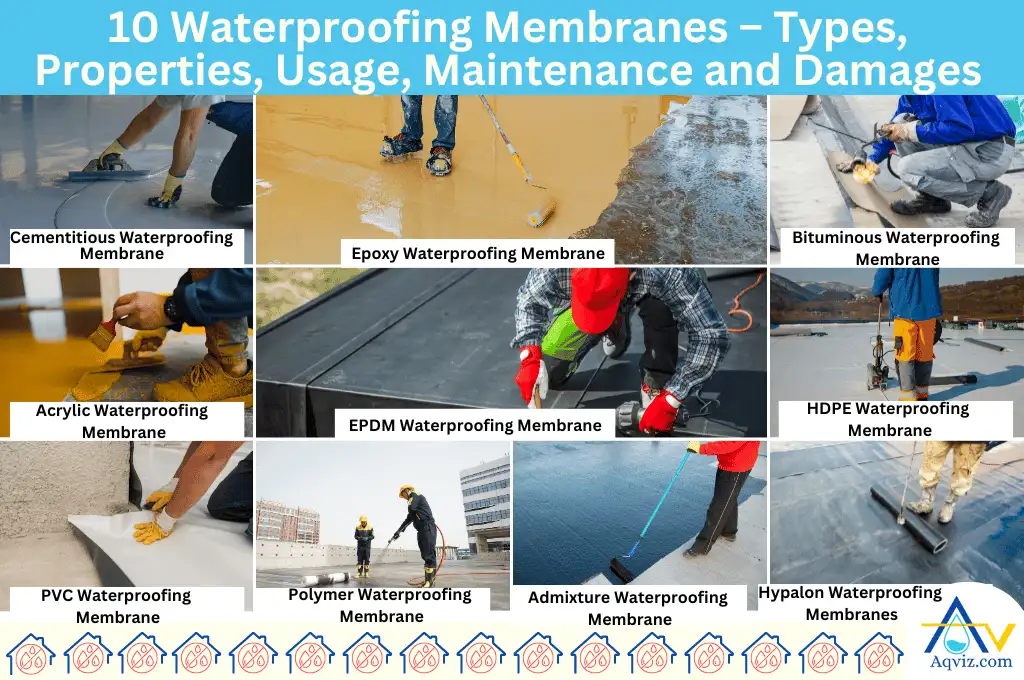Just How Waterproofing Works: A Comprehensive Consider Strategies and Technologies
Waterproofing is essential for shielding frameworks from moisture-related damage. It involves various techniques and modern technologies that develop obstacles against water intrusion. Typical approaches, such as compacted clay, coexist with modern-day technologies like liquid-applied membrane layers. Understanding the nuances of these strategies is crucial for effective application. The effectiveness of any waterproofing service hinges not only on the techniques used however additionally on continuous maintenance and evaluation. What are the vital variables that affect long-term efficiency?
Comprehending the Fundamentals of Waterproofing
Waterproofing is a vital procedure that secures frameworks from water intrusion, which can cause substantial damage with time. This method includes the application of various materials and strategies created to develop an obstacle against dampness. The primary objective is to avoid water from passing through surfaces, which can create degeneration, mold and mildew growth, and architectural instability.Various aspects influence the choice of waterproofing method, including the type of framework, its place, and ecological problems. Understanding the physics of water motion and the residential properties of different materials is vital in choosing an effective waterproofing solution.Effective waterproofing not only safeguards structures yet also enhances their long life and honesty. Usually, it is incorporated right into the layout stage of building to assure detailed defense. As awareness of water-related issues grows, the importance of understanding waterproofing fundamentals becomes increasingly clear to designers, home builders, and residential property proprietors alike.
Typical Waterproofing Approaches
Typical waterproofing approaches have actually been used for centuries, counting on time-tested techniques and products to guard frameworks from water damages. Among the earliest techniques includes using clay, which, when compressed, produces an all-natural obstacle against dampness. In addition, bitumen, a sticky, black material originated from petroleum, has actually been employed for its water-resistant buildings, usually put on roofs and foundations.Another method includes the application of lime-based plasters, which supply a breathable layer that permits wetness to run away while protecting against water ingress. Thatch roof covering, a conventional technique still seen in some societies, provides excellent waterproofing because of its snugly packed straw layers.Moreover, using stone and block has projected, as these materials are naturally resistant to water when properly set up. Overall, standard waterproofing methods highlight the significance of picking suitable products and construction techniques to improve toughness against water intrusion.
Modern Waterproofing Technologies
Innovations in modern-day waterproofing modern technologies have actually changed the method structures are safeguarded from water damages. Innovative techniques such as liquid-applied membranes and advanced sealants have actually improved the performance and versatility of waterproofing remedies. These technologies enable seamless application, minimizing the danger of leakages and making certain thorough insurance coverage over intricate surfaces.Moreover, the integration of clever technologies, such as wetness sensing units and automated monitoring systems, makes it possible for real-time evaluation of waterproofing efficiency. This aggressive approach assists in prompt maintenance and minimizes long-lasting fixing costs.Additionally, advancements in spray-applied finishings provide fast application and exceptional adhesion, adapting to numerous substrates while giving durable protection. Techniques like polymer-modified systems further boost versatility and durability, making them ideal for varied atmospheres. Overall, modern waterproofing modern technologies not just reduce water intrusion yet likewise add to the longevity and sustainability of frameworks, marking a significant change in the industry.
Products Used in Waterproofing
The effectiveness of waterproofing options heavily counts on the materials made use of in their application. Different products are utilized to create obstacles against water access, each with special properties matched for different atmospheres. Typically made use of products include membranes, coatings, and sealants.Liquid-applied membrane layers, frequently made from polyurethane or acrylic, form a smooth barrier that adapts to complex surface areas. Sheet membranes, typically created from rubber or thermoplastic, deal longevity and are excellent for bigger areas. In addition, cementitious waterproofing products, composed of cementitious compounds, offer exceptional bond and flexibility.Sealants made from silicone or polyurethane are important for joints and joints, ensuring extensive defense. Moreover, sophisticated materials, such as geo-composite membranes, incorporate numerous features, improving performance. In general, the choice of waterproofing products is important in achieving long-lasting and efficient water resistance, tailored to certain project demands and ecological problems.
Usual Applications of Waterproofing
Waterproofing plays a vital function in numerous sectors, making sure the long life and honesty of frameworks. Typical applications include domestic services that safeguard homes, commercial framework that safeguards businesses, and industrial settings that require durable security against moisture. Recognizing these applications highlights the value of waterproofing in preserving both safety and functionality throughout various settings.
Residential Waterproofing Solutions
Lots of house owners deal with challenges with dampness invasion, making effective household waterproofing options important. Various approaches exist to address this concern, including interior and outside waterproofing systems. Interior services typically involve the application of sealers and finishings to basement wall surfaces, which help prevent water infiltration. Exterior techniques generally consist of the setup of drainage systems and water resistant membrane layers that divert water away from the foundation.Additionally, home owners might consider sump pumps to get rid of water buildup and dehumidifiers to his explanation regulate humidity degrees. Appropriate grading and the use of gutters likewise play an essential duty in handling water circulation around the home. By carrying out these methods, homeowners can substantially decrease the threat of water damage and mold development, ensuring a completely dry and risk-free living setting.

Business Facilities Protection
Efficient waterproofing solutions play an important role in the security of business infrastructure. Sump pump discharge drainage Omaha. These techniques are vital for guarding buildings, vehicle parking frameworks, and bridges from water damages, which can compromise structural stability and bring about costly repair services. Usual applications include the setup of membranes, finishings, and sealers that develop obstacles against wetness seepage. Areas such as cellars, roof coverings, and outside wall surfaces are frequently focused on to assure durability and resilience. Furthermore, waterproofing systems can improve power performance by preventing water-related problems that might result in mold development and damage. By implementing durable waterproofing procedures, homeowner can shield their investments and preserve functional performance, click reference ultimately adding to the overall sustainability of industrial centers
Industrial Applications Overview
While various sectors encounter distinct difficulties, the demand for dependable waterproofing services remains a consistent in industrial applications. Industries such as production, building, and energy commonly come across atmospheres where moisture exposure can endanger structural integrity and operational efficiency. In producing facilities, waterproofing is important for safeguarding equipment and products from water damages. In construction, it safeguards foundations and cellars versus groundwater infiltration. The power field relies upon waterproofing for the security of devices in hydroelectric plants and overseas frameworks. Furthermore, food handling sectors utilize waterproofing to guarantee hygiene and compliance with security criteria. In general, effective waterproofing solutions are important for boosting sturdiness, safety, and productivity throughout different industrial setups.
Upkeep and Durability of Waterproofing Solutions
Waterproofing services are made to supply long-term security against wetness breach, regular maintenance is vital to guarantee their effectiveness and durability. Routine assessments play a considerable role in recognizing prospective concerns such as fractures, peeling, or indicators of water damages. Dealing with these troubles immediately can avoid additional degeneration and pricey repairs.Additionally, cleaning the surface of waterproofed areas assists get rid of dust and particles that might compromise the honesty of the waterproofing barrier. It's likewise advisable to reapply protective layers or sealants as suggested by producers to keep perfect performance. Ecological elements, such as UV direct exposure and extreme weather, can impact the life expectancy of waterproofing materials, making routine analysis essential
Often Asked Inquiries
Can Waterproofing Be Applied in Winter?
The inquiry Full Article of applying waterproofing in winter raises issues regarding attachment and healing. Many products may not carry out at their finest in reduced temperature levels, demanding careful selection and consideration of certain standards for reliable application.
For How Long Does Waterproofing Normally Last?
The period of waterproofing performance differs based upon products and ecological factors. Typically, it can last from five to 10 years, but regular maintenance and inspections are vital to assure peak performance and durability.
Is DIY Waterproofing Effective and Safe?
The efficiency and safety and security of do it yourself waterproofing depend upon numerous aspects, including worldly quality and application technique. While some individuals achieve satisfying results, others might run into problems that jeopardize lasting protection and architectural integrity.
What Are the Signs of Failing Waterproofing?
Indications of falling short waterproofing consist of visible water stains, peeling paint, mold development, musty smells, and wetness in wall surfaces or ceilings - French drain installation Omaha. These indications suggest compromised barriers, requiring timely evaluation and prospective remediation to stop additional damages
Just how Do I Pick the Right Waterproofing Contractor?
